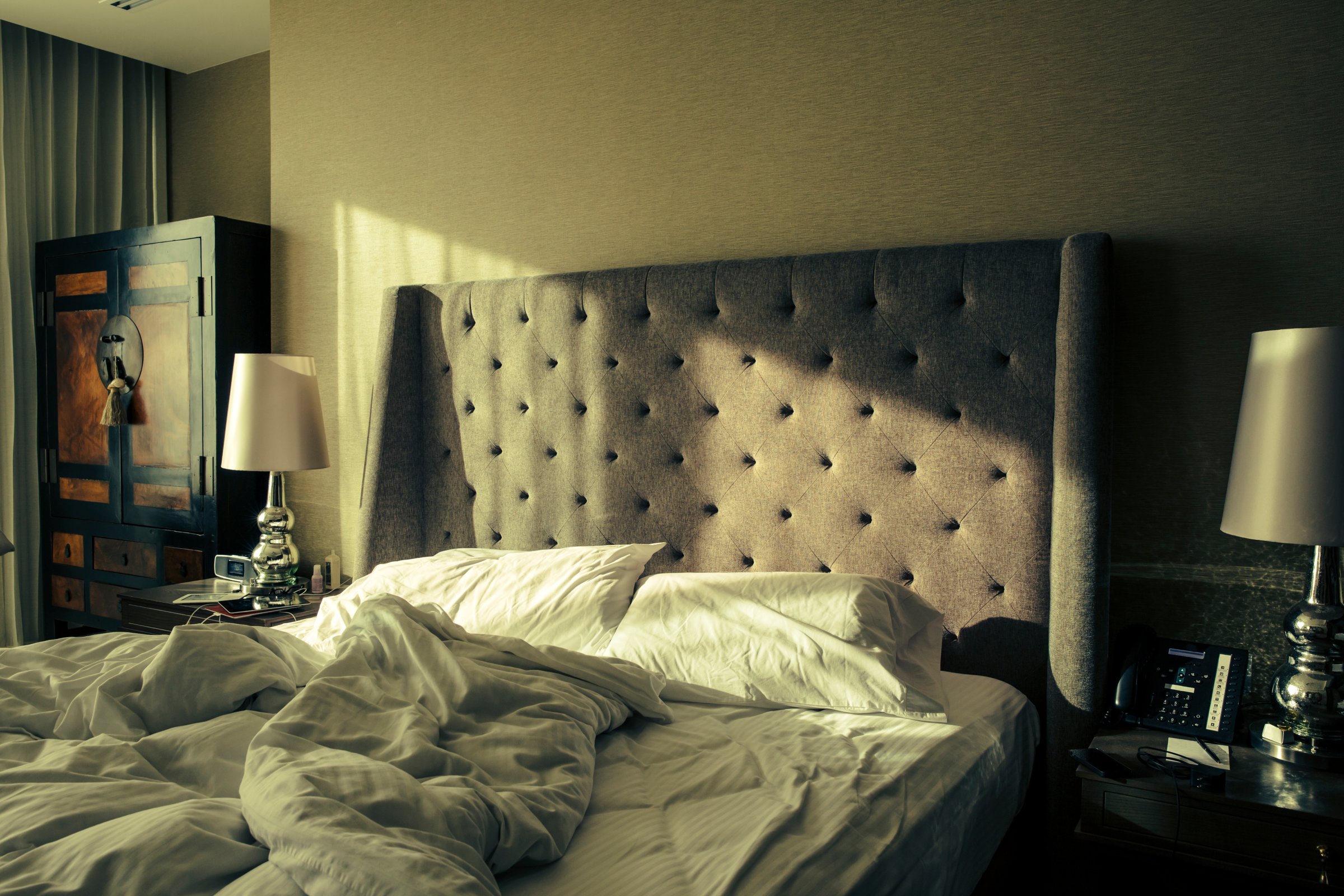
Anyone who’s ever Googled “how to fall asleep” knows about the endless supply of sleep hygiene advice: tips, like “take a shower before bed” or “don’t eat after 6 p.m.”, that are meant to help clean up your bedtime routine and enhance sleep quality. Though some might be helpful, people who truly can’t fall asleep—like the 70 million Americans who have a sleep disorder—need more than small changes.
“Sleep hygiene is like being told to wash your hands: it can prevent an infection, but it can’t treat one,” says Michael Grandner, director of the sleep and health research program at the University of Arizona College of Medicine—Tucson. “If you cross the line to a sleep disorder, you need some help.”
Below are some of the strange-sounding, sleeping pill-free therapies a doctor may prescribe for people who can’t sleep.
Stimulus control: People tend to do stimulating things in bed that have nothing to do with sleep, like reading and watching TV. Try adopting a “bed = sleep” mantra. “When you’re in bed, you’re asleep,” says Grandner. “If you’re in bed and you’re not asleep, you get out of bed.”
The goal is to strengthen your body’s association with the bed as a place you only sleep. In some cases, people may feel a bit sleep deprived in the first few weeks of practicing stimulus control, since they may have to get out of bed a few times. But it’s a core part of cognitive behavioral therapy for insomnia (CBT-I), which targets a person’s thoughts and behaviors for better sleep, and Grandner says the therapy is simple and powerful.
Sleep restriction: Ironic, right? “This is the worst name for an insomnia treatment, but it’s shockingly effective,” says Grandner. In sleep restriction, another CBT-I practice, a person limits the amount of time they spend in bed not sleeping.
Imagine trying to sleep eight hours a night, but only succeeding for five of them, spending three hours lying in bed awake. Using this technique, a doctor may tell you to only spend five hours in bed and then get up. Reducing the amount of time spent in bed causes some sleep deprivation, which can help a person feel more tired the next night. As sleep improves, more time in bed is added. Don’t try it without a doctor’s oversight, Grandner warns, given the potential for side effects.
Paradoxical intention: It’s a fancy phrase for tricking yourself into trying to stay awake. “This is a technique used for people who are very worried about not sleeping,” says Grandner. “If you need to obsess about something, don’t obsess about trying to be asleep. Instead, obsess about trying to stay awake.” Getting rid of the frustration may help people relax and drift off.
Biofeedback: A sleep specialist hooks a person up to a device where they can watch their own biological signals, like heart rate, brain waves and breathing patterns. People can then train themselves to slow those measurements down and use those skills at bedtime.
Polyphasic sleep: The idea behind it is that humans don’t naturally sleep in one big chunk. “Traditionally, humans took naps, and even at night, sleep was often broken into 2-3 bigger chunks,” says Grandner. Some people may go to sleep early, wake up, do a task, then go back to bed—and Grandner says that’s totally normal and possibly beneficial.
Polyphasic sleep has caught on among those who think they can “hack” their sleep for more productivity by only taking short naps throughout the day. “This is not a good idea and likely dangerous,” says Grandner. “Fortunately, it’s really difficult to maintain and most people who try it can’t keep it up.”
Thought challenging: Some people lay awake and convince themselves that if they don’t fall asleep soon, something horrible—like a car crash or a layoff—will happen to them the next day. One way to challenge those thoughts is to ask people how many times that has actually happened, Grandner says. By making the case that those possibilities are very unlikely, people can let them go. “It arms you with some ammunition to combat irrational thoughts,” he says.
Meditation: Relaxing through imagery, meditation or breathing exercises can help the body ready itself for rest. Mindfulness mediation, which emphasizes focusing on breath and bringing your mind into the present., has been linked to a host of different health improvements, and sleep doctors think it can work for insomnia symptoms, too. “It’s all about creating some distance between you and feelings that can have a mind of their own,” says Grandner.
More Must-Reads From TIME
- The 100 Most Influential People of 2024
- The Revolution of Yulia Navalnaya
- 6 Compliments That Land Every Time
- What's the Deal With the Bitcoin Halving?
- If You're Dating Right Now , You're Brave: Column
- The AI That Could Heal a Divided Internet
- Fallout Is a Brilliant Model for the Future of Video Game Adaptations
- Want Weekly Recs on What to Watch, Read, and More? Sign Up for Worth Your Time
Contact us at letters@time.com